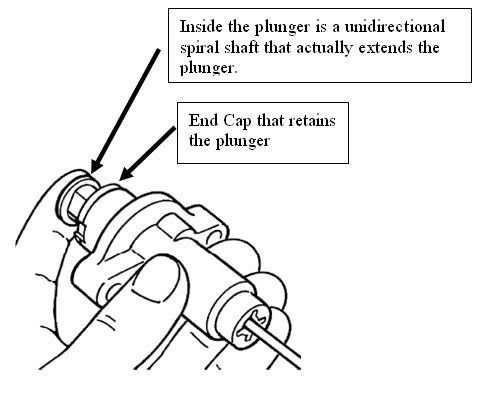road runner
Well-known member
FYI my 07 needed timing chain tensioner
I have had some Timing Chain noise this past summer which got worse at the end of the season. I took it to dealer so they could hear it and they said it sounded like chain noise, and it could be a bad tensioner. I have YES warranty, so I asked if they could fix it for me. They said they would call Yamaha to see if they were having any issues with tensioner. The dealer told me that Yamaha said they were not having any issues with tensioner, so dealer told me it may be normal for that engine or it maybe a stuck adjuster and I could try to put more tension on it. :glare: (they may have done more if I was willing to leave bike there but I'm not sure. also they know I like to do my own work)
After a few months I went back to dealer and told them it was getting worse and I didn't think it was normal. I get along with the service manager very well and he knows I'm a tech. By now it's winter and I can't get the bike to them, so I asked him what I could do to confirm or deny the tensioner. He told me to take the cap screw out and turn the tensioner screw counter clockwise a little while engine is running to put a little more tension on the chain and that should cure it. When I did that the noise went away, but as soon as I took the screw driver out of the tensioner it went back were it was and started making noise again. I told him this and he said the tensioner was bad, and he got me a new one under warranty.
I put the new tensioner in and no more noise. All is good now. :yahoo:
Sorry for the long story,but I have 2 reasons for sharing;
#1- I'm very surprised my TC tensioner was bad already, and I haven't heard of any other failures this early.
#2- YES warranty is nice, and I have a good re pore with my servicing dealer, but it seems like if you don't have a major issue Yamaha doesn't want to fix it without some arguing.
My .02 cents
A.C.
I have had some Timing Chain noise this past summer which got worse at the end of the season. I took it to dealer so they could hear it and they said it sounded like chain noise, and it could be a bad tensioner. I have YES warranty, so I asked if they could fix it for me. They said they would call Yamaha to see if they were having any issues with tensioner. The dealer told me that Yamaha said they were not having any issues with tensioner, so dealer told me it may be normal for that engine or it maybe a stuck adjuster and I could try to put more tension on it. :glare: (they may have done more if I was willing to leave bike there but I'm not sure. also they know I like to do my own work)
After a few months I went back to dealer and told them it was getting worse and I didn't think it was normal. I get along with the service manager very well and he knows I'm a tech. By now it's winter and I can't get the bike to them, so I asked him what I could do to confirm or deny the tensioner. He told me to take the cap screw out and turn the tensioner screw counter clockwise a little while engine is running to put a little more tension on the chain and that should cure it. When I did that the noise went away, but as soon as I took the screw driver out of the tensioner it went back were it was and started making noise again. I told him this and he said the tensioner was bad, and he got me a new one under warranty.
I put the new tensioner in and no more noise. All is good now. :yahoo:
Sorry for the long story,but I have 2 reasons for sharing;
#1- I'm very surprised my TC tensioner was bad already, and I haven't heard of any other failures this early.
#2- YES warranty is nice, and I have a good re pore with my servicing dealer, but it seems like if you don't have a major issue Yamaha doesn't want to fix it without some arguing.
My .02 cents
A.C.































































